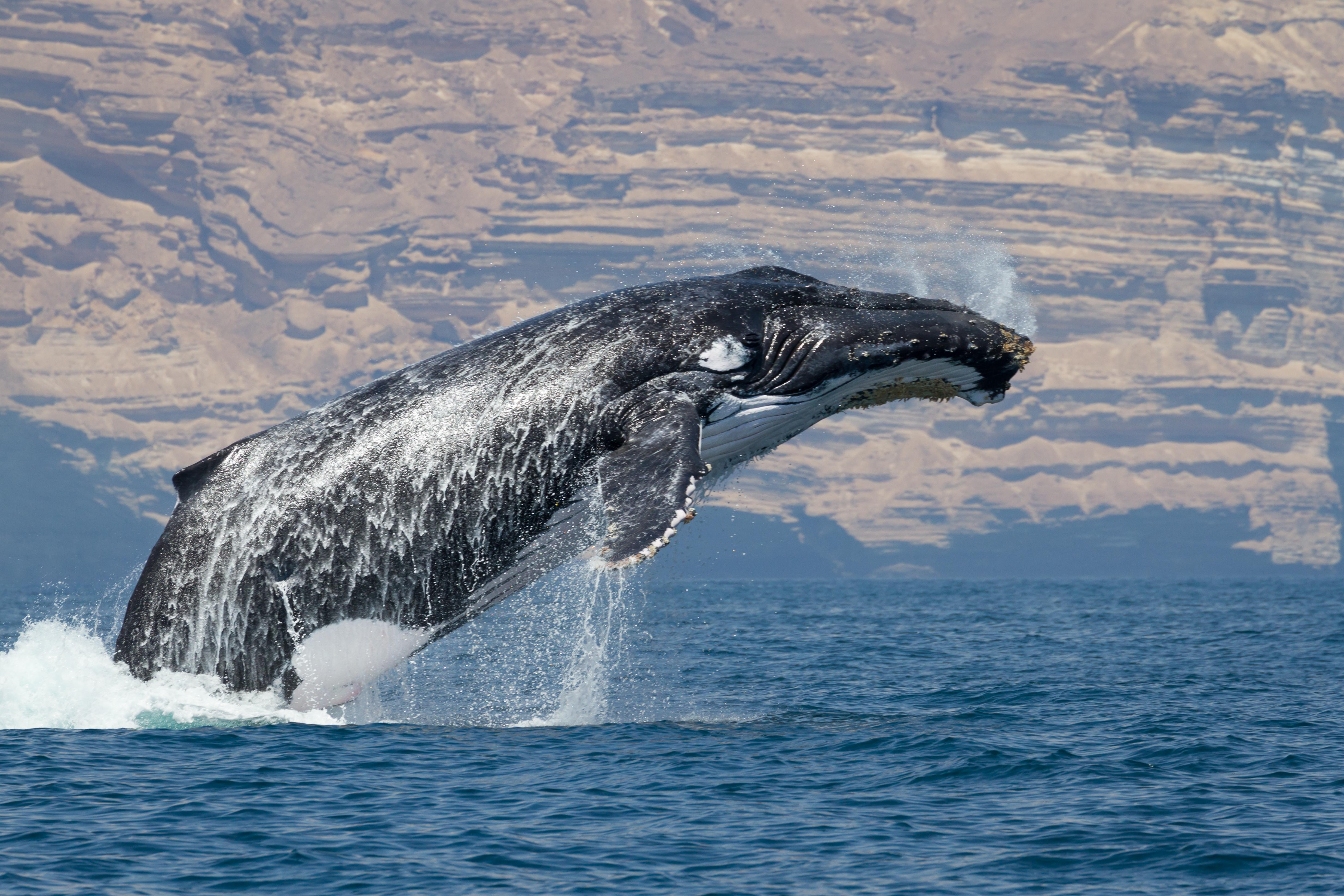

Muscat: The Environment Society of Oman (ESO) in partnership with New England Aquarium (NEA) have recently finalised their findings on a two-year acoustic dataset on the Arabian Sea Humpback Whales (ASHW). The aim of the project was to document spatial and temporal distribution of Arabian Sea humpback whales in the region, investigate singing behaviour and geographic variation, as well as assess potential threats to the population posed by anthropogenic noise. The project was conducted off the coast of Oman in Hallaniyats Bay and the Gulf of Masirah from 2011 to 2013.
Currently listed as Endangered by the IUCN Red List, the Arabian Sea humpback whale has a population estimated to be less than 100. The study was undertaken as a matter of urgency and as a means to identify conservation solutions by acoustically assessing the presence and seasonality of whales, and monitoring the amount and effects of ambient noise on whales. Measuring sound is a critical factor for cetaceans as hearing is their primary sense used for foraging, migration and reproduction, and impairment of communication and hearing can have serious population consequences. The study involved three components, seasonal and geographic detections of humpback whale vocalizations off Oman, characterizing ambient noise in the monitored regions, and comparing song structure variation across the western Indian Ocean, with ground-breaking results.
Suaad al Harthi, executive director at the Environment Society of Oman, stated “I would like to thank our sponsors Shell Development Oman for funding and supporting this project. The research and the acoustic analysis has revealed valuable information about the Arabian Sea
Humpback Whales, confirming the areas that are important to them, and the potential impact of noise pollution. Our conservation program is ongoing and with the support of local and international partners we are able to develop and address conservation concerns.”.
The detection of whale presence involves the highly effective method of Passive Acoustic Monitoring (PAM) for assessing distribution across broad spatial and temporal scales. From continuously recording at three sites for two years, and a total of 1,369 acoustic recording days, it was discovered that the population utilizes both the Gulf of Masirah and Hallaniyat Bay for breeding. However, the Hallaniyats, had more frequent singing of Arabian Sea Humpback Whales, suggesting it may be a more important breeding area. Nevertheless, the study clearly indicated that both locations are considered “hot spots” for the population. There was also a shift in distribution from south to north into the Gulf of Masirah towards the end of the breeding season, apparently as the population shifted into the non-breeding season.
Muna al Shukaili, general manager of External Relations and Social Investment Lead at Shell Development Oman said, “We are proud to sponsor this initiative and help raise awareness on the impact human activities have on the Arabian Sea humpback whales. This is the reason we have collaborated with ESO and we hope that a lasting solution can be found for these vulnerable mammals. Preserving the ocean biodiversity is part of Shell’s commitment towards the environment and sustainable development in Oman.”
Oman Observer is now on the WhatsApp channel. Click here



